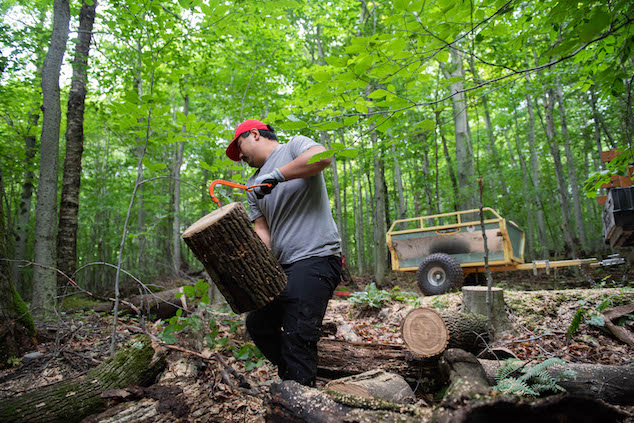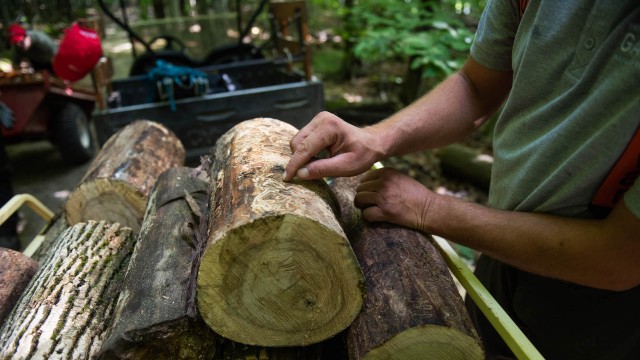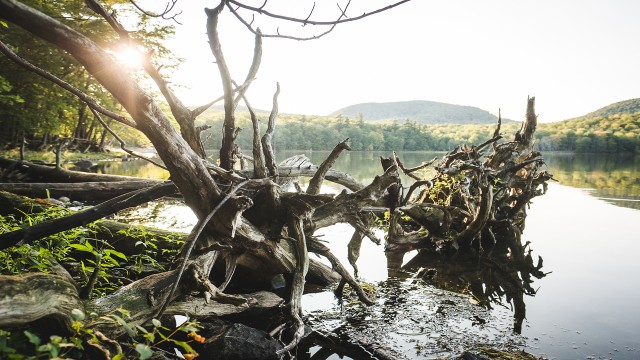Visitors of the Gault Nature Reserve sometimes wonder why so many dead or dying trees are found in the forest and why the forest floor is full of debris. This is because the forest is left unmanaged—and this is on purpose! Under normal conditions, trees in a forest do not require human intervention. After all, they did just fine for many millennia. Mont Saint-Hilaire has one of the last remnants of old-growth forest in the region. This old-growth character contributes to the exceptional value of the Reserve for teaching and research.
Unfortunately, the forest is not immune to the unintentional consequences of human activity. One such formidable foe has recently arrived: the emerald ash borer (Agrilus planipennis). This invasive species of insect threatens forests by attacking ash trees. An affected tree can take up to 10 years to die from an infestation. These trees, however, are more prone to falling in high wind conditions endangering visitors hiking the Reserve’s trails. Our team works hard to examine ash trees located along the trails throughout the year. When they find signs of an emerald ash borer infestation, they cut down the hazardous tree.
How does the emerald ash borer kill ash trees?
The emerald ash borer infestation starts when adults deposit their eggs in crevices in the tree's bark. Once the eggs hatch, the larvae will chew through the bark, carving serpentine tunnels (called galleries) as they do so. Once they reach adulthood, the emerald ash borer will leave the tree. The galleries they leave behind, however, prevent the nutrients and water from flowing through the tree trunk. Over time, this will kill the tree, which will rot from the inside.

CCC intern Matthew Yen transports an ash tree affected by the emerald ash borer for disposal (photo: Alex Tran)
What makes invasive species so successful?
Over the last decades, invasive species like the emerald ash borer have become more common. As movement between continents becomes easier for us, so it does for all kinds of species. The emerald ash borer, for example, is originally from Asia. Experts believe it first arrived in North America in the 1990s in wooden shipping materials like crates and pallets.
Since the ash species native to North America have not evolved alongside the emerald ash borer, they are not adapted to defend themselves against the ravaging insect. Ash trees in our forest are therefore considered ecologically “naïve”. Similarly, most species that feed on insects like woodpeckers do not feed on the emerald ash borer. These factors have led to populations growing rapidly and spreading widely since the first recorded sighting in 2002.
What can we do to help?
Sadly, eradication of the emerald ash borer from the continent is unlikely. The good news is that while researchers continue to explore different mitigation strategies, there are a few things we can do to help! One of the main ways to help reduce the spread and severity of infestations is by avoiding transporting firewood and branches between regions. Additionally, if you have ash trees on your property, we encourage you to see which treatments and disposal services are available in your municipality.
- Click here to read more about the emerald ash borer in Mont-Saint-Hilaire (in French).
- To learn more about the emerald ash borer situation in Quebec, check out the Conseil Québécois des espèces exotiques envahissantes (CQEEE) website (in French).
Frédérique Truchon
Communications associate
Gault Nature Reserve of McGill University
Header : Martin Lacasse points to the galleries that emerald ash borer larvae leave in the trunk of affected trees (photo: Alex Tran)

